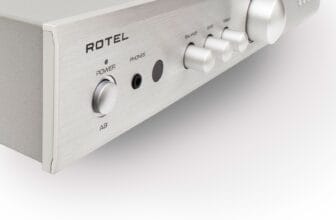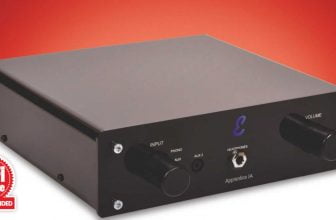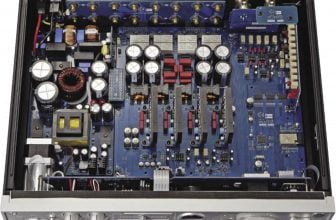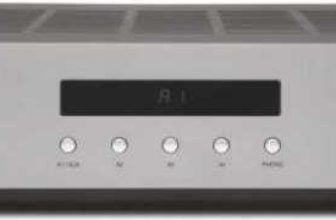Marantz Model 60n Review
The functions of amplifier and streamer come together in the new Marantz Model 60n. We extensively tested how well this combination works in our listening room before its premiere at the Central German HiFi Days.
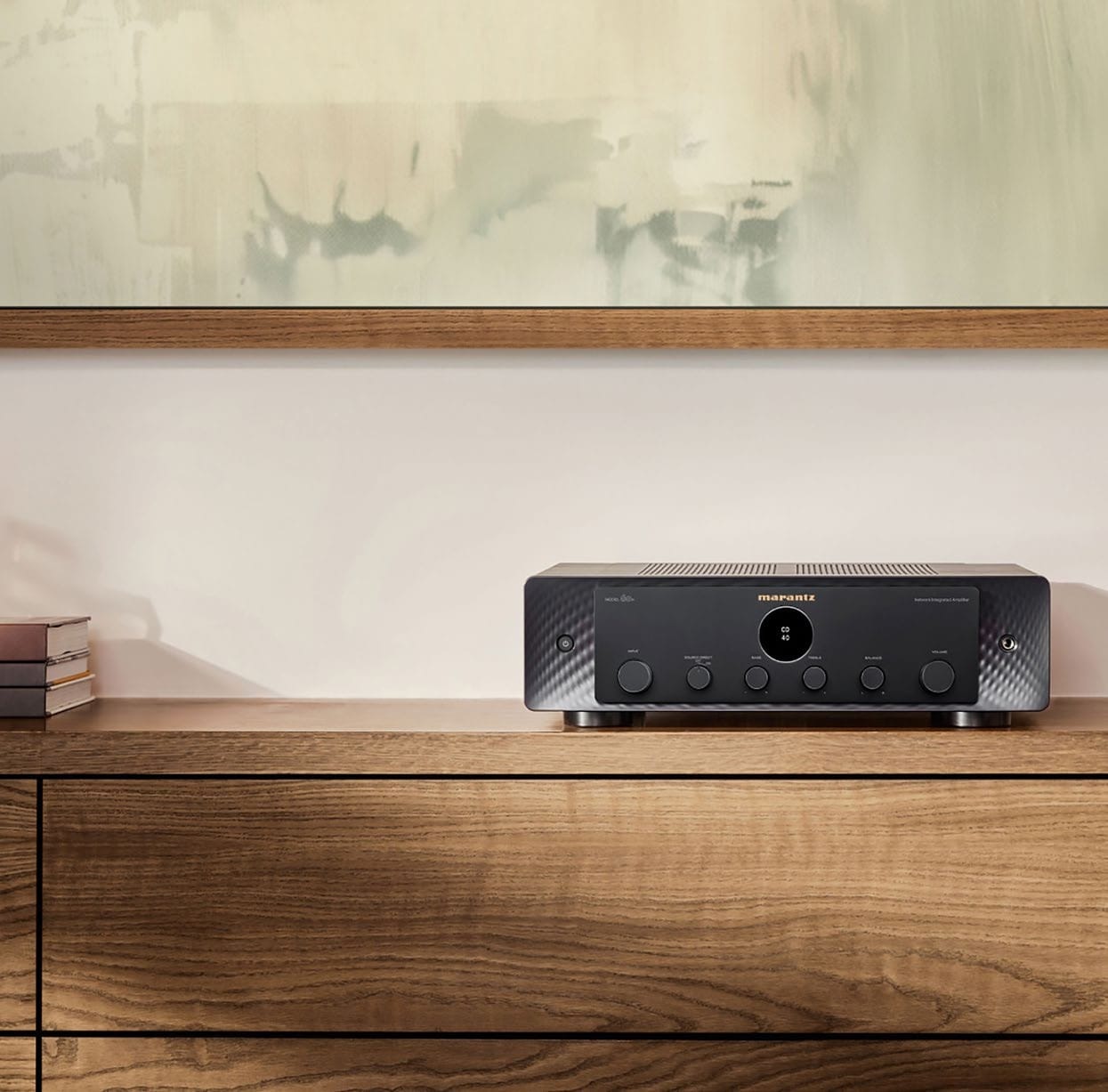
We are always eager to see which setup the exhibitors will present at the Central German HiFi Days. We are particularly curious about D&M Germany, who occupy the largest space at the MDHT with their brands Bowers & Wilkins, Denon, and Marantz. This time, product manager Roland Krüger remained tight-lipped, aiming to build anticipation and maintain the element of surprise for the event. Nevertheless, we managed to get the new Marantz Model 60n into our test lab and thoroughly examined it a few weeks before the Leipzig HiFi show. The Model 60n is not an entirely new device; it is the successor to the PM7000N. So, it’s worth examining what exactly has changed compared to its predecessor.
Comparison with the predecessor
Let’s start with the most noticeable difference: the price. The Model 60n is about 50% more expensive than the PM7000N. The higher price of the Model 60n is not solely due to inflation and increased production costs but also to enhanced features and newer technologies. Let’s take a closer look at these improvements.
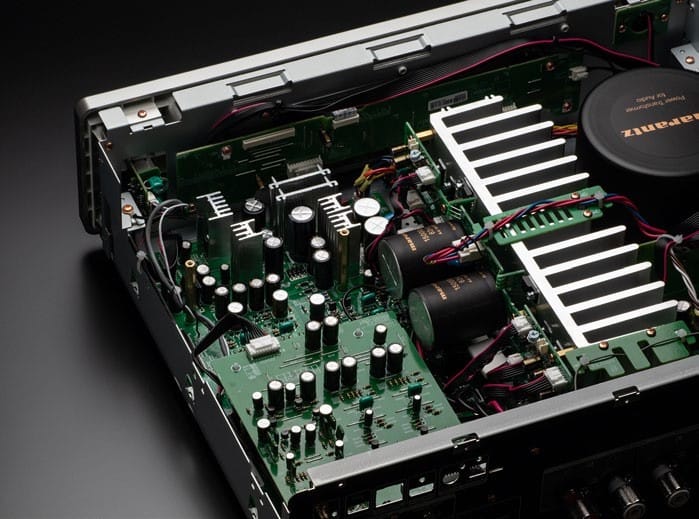
One thing that hasn’t changed is the amplifier’s power output.
Like its predecessor, the new Model 60n delivers the same 60 watts + 60 watts at 8 ohms or 80 watts + 80 watts at 4 ohms. However, the Model 60n features an updated current feedback amplifier with a single push-pull circuit, which promises improved signal processing and sound clarity compared to the PM7000N.
Both amplifiers are equipped with Marantz’s HDAM-SA2/SA3 technology, ensuring clear and detailed sound according to the manufacturer.
The Model 60n also has a new HDAM for the preamp, offering additional sound improvements and reduced distortion. Like the PM7000N, the Model 60n includes an MM phono preamp for vinyl playback.
There are differences, however, in the D/A converters. The Model 60n uses the ES9018 converter, whereas the PM7000N featured the AKM4490 and ES9010.
The ES9018 in the Model 60n is the more modern version with improved sound resolution.
The integrated HEOS has also seen subtle changes. Both devices are equipped with the Home Entertainment Operating System for wireless music streaming, including multiroom support. However, the Model 60n uses AIOS6.5, while the PM7000N runs on AIOS4.0. The newer version in the Model 60n provides added features such as Roon Ready, Bluetooth TX, and support for high-resolution audio formats like DSD11.2 and DXD. These upgrades make the Model 60n a more versatile choice for modern music sources. Bluetooth TX allows for both sending and receiving audio, enabling music streaming from a phone to the Marantz or using it as a source for Bluetooth headphones. Home theater fans will appreciate that the Model 60n now includes HDMI ARC, a feature the PM7000N lacks. Speaking of connections, the Model 60n also has preamp outputs, which means it can be used as a standalone preamp. Lastly, when it comes to subwoofers, both models have an output, but their low-pass filters differ. The Model 60n has a fixed low-pass filter at 150 Hz, while the PM7000N offers selectable frequencies in 20 Hz increments from 40 Hz to 120 Hz. This favors the PM7000N, although the fixed filter on the Model 60n provides more reliability for subwoofer beginners.

Features and functions
Looking back at the 1980s, we find popular HiFi devices that are almost forgotten today: the receivers. These were radio, preamp, and power amp combined in one device. Very popular due to their space-saving design. Some even included a cassette deck or later a CD player. Today, we refer to them as all-in-one systems.
With the rise of streaming amplifiers, classic stereo receivers have nearly disappeared. We no longer need radio when the amplifier is connected to the internet, as all radio stations, even local ones, are available online in better quality than the noisy and indistinct FM. Additionally, we can easily play our CD collection if stored as files on a home server. Most streaming amplifiers, including the Model 60n, are compatible with turntables. It supports MM systems without issue. The connected turntable sounds mature and well-detailed. There’s no need for a separate phono preamp for an MM system. The Model 60n also supports wireless streaming via WiFi or Bluetooth, including AirPlay 2, Chromecast, Roon Ready, Spotify Connect, and Tidal Connect. It is also compatible with Tidal (Hi Res), Deezer (HiFi), Amazon Music HD, TuneIn, and even Soundcloud. Everything works smoothly, and the device switches quickly between streaming services in the HEOS app, thanks to powerful hardware. While the HEOS app isn’t strictly necessary, there is an excellent remote control included. This remote allows for more detailed control, although it is easier to make changes through the app. Some features, like adjusting the Lock Range, can only be controlled with the remote.
As a reminder: The Lock Range determines the range within which the DAC correctly “captures” digital audio signals and converts them to an analog signal. A larger Lock Range usually means better adaptation to different signal conditions, resulting in more stable audio output. A narrow Lock Range is recommended for stable signal sources like a CD player to improve sound quality.
HDMI is now included in the new Model 60n, as mentioned earlier – something the predecessor lacked. It’s only ARC, not eARC, which is reasonable. eARC is only needed for data-heavy formats like Dolby Atmos or DTS:X. Regular stereo can be transmitted via ARC with more than enough bandwidth. The Model 60n can now be connected to a TV, and its volume can be controlled with the TV remote. The Model 60n automatically turns on when the TV is switched on. When the TV is turned off, the Marantz also deactivates, unless music is playing through Chromecast, AirPlay, or Tidal. This means the streaming amplifier wakes from standby whenever needed.
Connectivity options
The front of the Model 60n has a 6.3 mm headphone jack for connecting headphones. As expected from a Japanese manufacturer, the headphone amplifier is top quality. Each instrument, voice, and sound is well-defined. Every nuance in the sound is noticeable, with perfectly shaped reverb tails, and we wonder if separate headphone amps are even necessary. Only highly demanding headphones may still need one, but for most, the answer is “no.” The musicality Marantz is known for is also present in the headphone amp. Anyone who enjoys listening to music, audiobooks, or TV with wired headphones will find the Model 60n ideal for this purpose.

Now let’s look at the back of the device.
In addition to the previously mentioned HDMI port, there are two line-in inputs and a CD input, all using RCA connectors. Above these is the phono input for MM systems. There are also digital connections: two digital inputs, one coaxial and one optical, as well as a USB-A port and a network input. Two antennas – one for Bluetooth and one for WiFi – complete the inputs.
The Model 60n also includes pre-out and sub-out connections, along with stereo speaker terminals. These terminals are notably sturdy and high-quality, inviting you to connect various speaker types. We did just that to explore the Model 60n’s sound capabilities.
Sound test
We took our time with this sound test, switching between Direct mode and Standard mode. Both modes can be selected directly on the device via the “Source Direct” knob. Sometimes, we preferred the “interpretation” of the Marantz (Standard mode), while other times, the direct signal sounded better. It often depended on the source.
For example, with Tidal and Roon, Direct mode was often a bit clearer. When watching a movie or streaming music via Bluetooth, the Standard mode was usually more pleasant, especially when using the internal EQ. With the EQ active, it was understandable that the Marantz sounded different in Standard mode. We listened to TV and movie audio over HDMI, a lot of streaming, and some CDs and vinyl records.
The standout qualities were the clear sound and precise localization of all signals. Marantz has mastered the art of avoiding any hint of digital harshness. No matter what we listened to, it always delivered that characteristic Marantz warmth – a deep, lively musicality that never sacrifices detail or introduces colorations. The Model 60n consistently brought out the best in the material and made listening to any source an enjoyable experience.
For those looking for a high-quality setup that doesn’t need to fill 650 square feet, the Marantz Model 60n is an excellent choice. It offers clear, musical sound, ample power for bookshelf and less power-hungry floor-standing speakers, and versatility. There’s no need for a separate streamer, DAC, or radio, as the Model 60n has everything built-in.
We shouldn’t forget the option to connect the Marantz to a TV for high-quality stereo sound. Overall, the Model 60n is a superb device, perfect for music lovers in the middle of the season!
Specifications
General
- Device Class: Streaming Amplifier
- Price Category: Mid-range
- Manufacturer: Marantz
- Model: Model 60n
- Dimensions (W/H/D): 44 × 13 × 43 cm
- Weight: 15.5 kg
- Information: www.marantz.com
Technical Data (as per manufacturer)
- Circuitry: Transistor
- Power: 60W (8 Ohm) / 80W (4 Ohm)
- Power Consumption: Standby: 0.3W / Operation: 220W
- Inputs:
- 3 × RCA
- 1 × Phono (MM)
- 1 × HDMI
- 1 × USB
- 1 × RJ45
- 1 × Coaxial
- 1 × Optical
- Outputs:
- 1 × Stereo Speaker
- 1 × Pre-Out
- 1 × Sub-Out
- 1 × Headphone
Conclusion
With the Model 60n, Marantz has improved on the PM7000N in nearly every aspect. While it costs more, it offers greater agility, a finely tuned DAC preamp circuit, and sufficient connectivity options, including HDMI, for most use cases. The streaming amplifier impresses with its detailed soundstage, delightful musicality, and thoughtful controls, whether using the app or remote.
Special Features
- HDMI ARC
- HEOS, WLAN, AirPlay 2, Chromecast
- Bluetooth TX
- Roon Ready
Advantages
- Very detailed with high musicality
- Quick response to app inputs
- Subwoofer connection
Disadvantages
- Slightly more expensive than the predecessor
Rating
- Playback quality: 58/60
- Features/Build quality: 19/20
- User-friendliness: 9.5/10
- Adjustments: None
- Intermediate result: 86.5 out of 90 points
- Price/Performance: Good (8/10)
Result: Excellent, 94.5%
When you purchase through links on our site, I may earn an affiliate commission. Here’s how it works.



